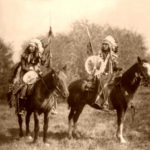
What Will Trump Do?
Will Winter Wilt the Protests?
At some point, facts become less important than the symbolism of protest. The facts about real environmental damage or legal issues relating to property do not matter in North Dakota. A bridge has become the front line of this fight.
Passionate news flares across FACEBOOK. Protesters started fires on the road by the bridge; Deputies fired volleys of tear gas and rubber bullets; a water cannon mounted to an armored vehicle, blasted the protesters already freezing in the 20 degree Fahrenheit of November in North Dakota. The bridge has two burned-out trucks and a stretch of coiled barbed wire but the greatest challenge to thee protesters and “protectors” may come from meters thick snow drifts and sub zero temperatures as winter progresses.
 All of this drama is obscured by the grand but mixed messages of the protesters. The fundamental issue
All of this drama is obscured by the grand but mixed messages of the protesters. The fundamental issue  is a 1,170-mile pipeline that would cross hundreds of waterways, wetlands, private parcels, and span four states. For the environmentalists this is a symbol of America’s carbon dependence. Even though this one piece of pipe is a tiny part of the US oil supply, the signal burns more brightly because of the climate denial of the elected President Trump.
is a 1,170-mile pipeline that would cross hundreds of waterways, wetlands, private parcels, and span four states. For the environmentalists this is a symbol of America’s carbon dependence. Even though this one piece of pipe is a tiny part of the US oil supply, the signal burns more brightly because of the climate denial of the elected President Trump.